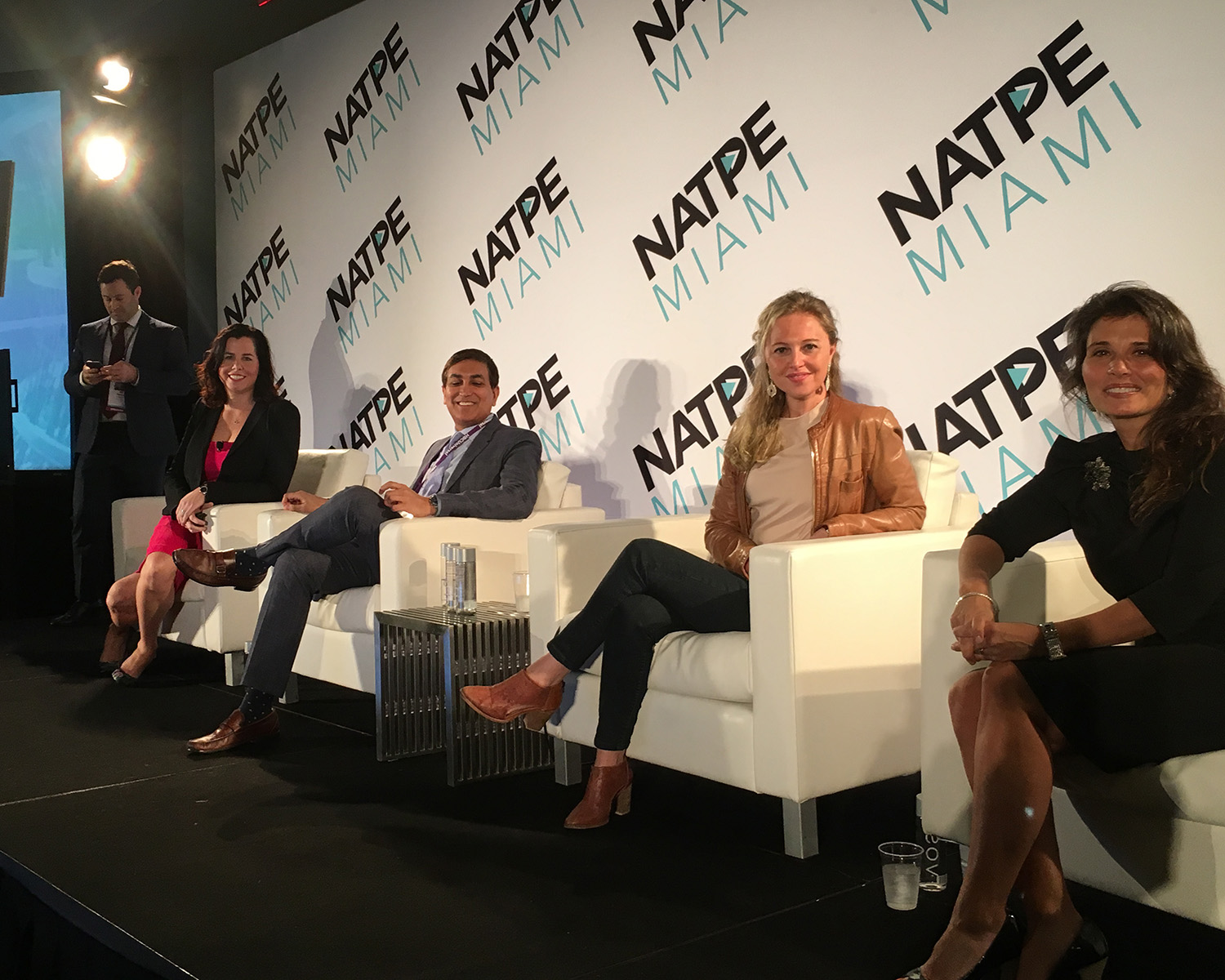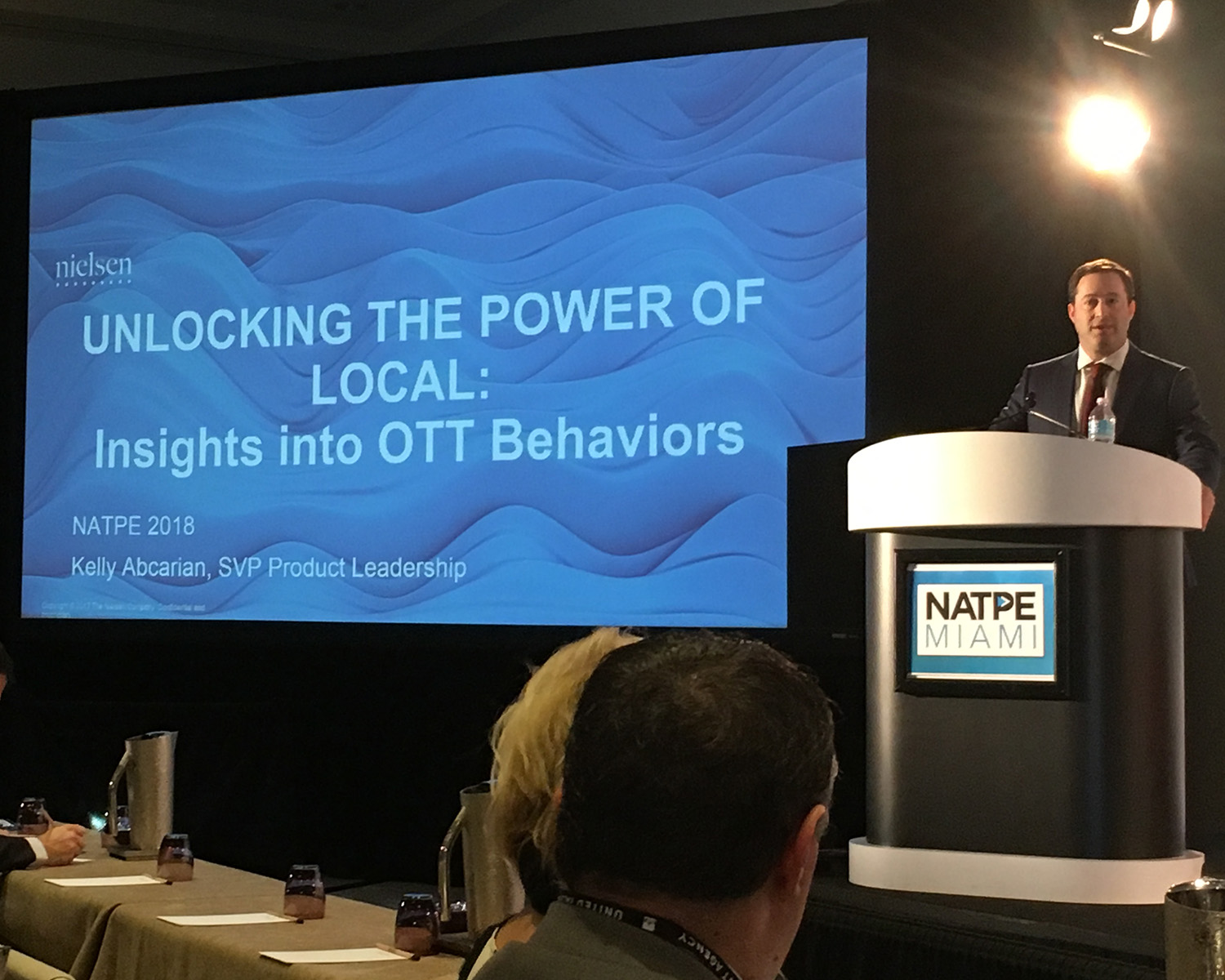
Over-the-top (OTT) viewing is gaining in popularity, growing and here to stay! And that means big opportunities for marketers, agencies and advertisers to engage viewers and consumers that spend time with these burgeoning media platforms.
During the 2018 National Association of Television Program Executives (NATPE) conference in Miami Beach, Fla., Kelly Abcarian, SVP of Product Leadership at Nielsen, presented the state of OTT, including OTT viewing behaviors and the platforms’ growth in local markets.
Onstage, Kelly spoke about the rise of OTT consumption and the dramatic growth of subscription video on demand (SVOD) services. She noted that 60% of homes in the U.S. have one or more SVOD services. And with more ways to access content than ever before, media consumption among U.S. adults 18 and over averaged about 73 hours per week in 2017, up from close to 64 hours per week in 2015.
However, OTT has caught on differently among consumers. Time spent streaming varies by household type. Traditional cable plus homes spend the least amount of time streaming, about an hour per day for adults 25 to 54; whereas over-the-air households (those with digital antennas) spend twice that amount, about two hours. Streaming broadband-only homes spend the most, almost three hours, and like over-the-air homes, the lion’s share of broadband-only homes’ streaming occurs on an internet-connected device.
“When you see where that growth is coming from, you are starting to observe the rise in OTT,” said Kelly. “About two-thirds of U.S. TV households have a device capable of streaming content to a television set, which includes internet-enabled video game consoles, internet-connected devices, or an enabled smart TV. This is up almost 10% from last year.”
Kelly also delved into how local markets vary in terms of streaming behavior and shared several key takeaways:
- Overall media consumption is growing, and changes in TV viewing are part of a larger consumer trend as more homes adapt to new technologies. There has been a shift in minutes from traditional TV to streaming devices and new OTT services, including virtual “skinny” bundles.
- Streaming behavior differs across the top 25 markets. Some markets such as Miami, Houston and Detroit have an above-average percentage of people 25-54 that are only using the TV set in a more traditional sense. Markets like Minneapolis, Seattle and Portland see more usage of both TV and internet-connected devices or only internet-connected device usage. These markets also have the largest number of broadband-only homes.
- Streaming behavior varies, not only by market type, but by consumer type (heavy, medium or light streamers). In most parts of the day, all three groups of people 25-54 watch about the same amount of broadcast TV. During the early morning news hours as well as access and primetime dayparts, however, the light and medium streamers watch more broadcast TV than the heaviest streamers. These segments help us understand how much streaming varies across the markets. For example, Miami has the highest percent of non-streamers and ranks last for time spent. Meanwhile Charlotte, Minneapolis and St. Louis are the top three markets for heavy streamers and rank near the top for total time spent streaming.
“SVOD services have grown dramatically over the last five years, and consumers have a plethora of viewing options,” said Kelly. “OTT growth, since 2011, across the top 25 LPM [Local People Meter] markets is continuing to grow. When creating your strategy, it is not only important to understand the growth of OTT, but the types of devices consumers are using in their home to get that content to the TV screen.”
Following the presentation, Jeff Wender, Managing Director, Nielsen Local Client Solutions, moderated a panel on opportunities in OTT, especially among local TV broadcasters. Federica Tremolada (Head of International Partnerships, YouTube TV), Shawn Makhijani (SVP, Strategy & Business Development, NBCUniversal Owned Television Stations) and Stacey Schulman (EVP, Strategy & Research, Katz Media Group) discussed consumer trends, future vision and the role OTT will play in local monetization in the years ahead.

“We really view the expansion of OTT as a great opportunity for local broadcasters because it’s getting our content out in front of people everywhere that they want to consume it,” said Shawn. ”OTT has shown that our content still resonates with a huge chunk of American viewers.”
“It’s all about the data, and if we can’t measure it, we can’t monetize it,” said Stacey. “We are in the data business. The future is bright and marketers will want to be part of something to build their brands so they can speak uniquely to addressable audiences.”
For more, view the full session below:
